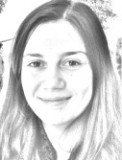ICU Management & Practice, Volume 17 - Issue 2, 2017
In 2014, a few trainees from opposite corners of Europe had the somewhat bizarre idea that all anaesthesiology trainees should be able to communicate on a common platform. What followed was an almost immediate endorsement of this plan by the European Society of Anaesthesiology (ESA) Board of Directors, which led to the first European-wide survey on trainees´ needs, goals and expectations (Sobreira Fernandes 2015 et al., unpublished results). In parallel, the trainees mentioned above started to work on the foundation of the ESA Trainees Committee (ESATC) and on what became the first pan-continental Anaesthesiology trainee network – the ESA Trainee Network (Trainees Committee Policies, esahq.org).
The first shock we had while taking part in this endeavour was the heterogeneity in training systems, leading to somewhat diverging objectives in terms of end-of-training abilities and competencies. The same had been previously postulated by two trainees from Western Europe, as well as Eastern Europe, in a conference that took place at Euroanaesthesia 2015 (Longrois et al 2016). In the same year (2015), the National Village exhibition at Euroanaesthesia had as a theme the anaesthesiology residency formats throughout Europe (Filipescu 2015). After compiling the data from the 19 countries that presented their results, what we expected through our personal experience was confirmed by the numbers.
Regarding the training format we differ significantly, namely the period of time allocated to Anaesthesia, Intensive Care Medicine, Pain Therapy and Emergency Medicine. Concerning Intensive Care Medicine, it goes from 6 months of training in Greece, to a maximum of 24 in Hungary, with most countries requesting at least 12 months of training in Intensive Care Medicine. We also have very different admission processes and criteria (from interview-based forms to nationwide examinations), different in-residency evaluations, distinct duration of training (from 2 years in Ukraine, to 7-8 years in the United Kingdom) and finally, non-identical examinations for end-of-training assessment.
We continued to work, in order to expand our network
(although it sometimes was more a pleasure than an obligation). To accomplish this
goal, we used social networks (esatrainee. com), but also used the existent
network built by the ESA National Anaesthesiology Societies Committee (NASC),
in order to identify the existing European National Trainee Sections. We were
astonished to realise that only 13 of the 37 European Countries associated to
the ESA had such entities. After 2 years, we are proud to say that now the
ESATN has 35 National Trainee Representatives (NTR). The first official meeting
between more than 25 NTR and the ESA Trainees Committee (ESATC) is set to take place
during Euroanaesthesia 2017 in Geneva.
See Also: Moving from “Learning by Doing” to Simulation
Meanwhile, after analysing the results from the European Survey we ran, as mentioned above (Sobreira Fernandes et al., unpublished results), we found that despite many differences, we are surprisingly similar when it comes to our concerns and needs. For instance, we found the main field of interest of trainees that took the survey was Intensive Care Medicine, followed by Loco-regional Anaesthesia and Emergency Medicine, a top three that was the same for trainees from the four considered European regions. Furthermore, the trainees´ main concern was related to education/preparation for the European Diploma in Anaesthesia and Intensive Care (EDAIC).
We followed up on our promise to further adapt the ESA resources to the trainees´ needs, and based on the results of our European Survey, we organised the first ever Euroanaesthesia Trainees´ Program during Euroanaesthesia 2016 in London, in collaboration with the Group of Anaesthetists in Training from the Association of Anaesthetists of Great Britain and Ireland (GAT-AAGBI). With the benevolence of Professors Mervyn Singer, Zsolt Molnár, Jean-Louis Teboul and Marc Leone, we had a hugely successful event (Symposium “ESATN: Networking with the Experts on Sepsis”), which confirmed that communication works, and trainees respond well to being asked what they want.
Our conclusion, after such positive experiences, is that ESA and the ESATN can contribute to enhance homogeneity of training in anaesthesiology throughout Europe, and respond to the needs of our future anaesthesiologists. The effective dissemination of information in a representative manner is an essential part to attain this goal, but can only be successfully done if it occurs both horizontally and vertically, amongst trainees and from educational stakeholders to trainees and vice versa.
That, we think, can change our future. We plan to see it
happen.
References:
Sobreira Fernandes D (2015). ESA Trainee Network – Dream big. Set goals. Take action. ESA Newsletter Online, Summer, 61. [Accessed: 16 May 2017] Available from newsletter.esahq.org/esa-trainee-network-what-can-the-esa-do-for-you
Longrois, D, Fischer D, Văleanu L (2016) Does ESA meet the trainees’ expectations in Europe? The trainees have their say about their expectations via a survey. ESA Newsletter Online, Spring, 64. Accessed: 16 May 2017] Available from newsletter.esahq.org/does-esa-meet-the-trainees-expectations-in-europe-the-trainees-have-their-say-about-their-expectations-via-a-survey









